A Whitman Triptych: I. O Setting Sun
$2.85
Order On Demand
-
Ships in 1 to 2 weeks
Details
Instruments
Ensembles
Genres
Composers
Publishers
Formats
Item Types
Levels
Usages
Description
Baritone voice solo, SATB choir unaccompanied - Late Intermediate
SKU: EC.8321
Composed by David Conte. Advanced/Collegiate. Secular, 21st century. Octavo. Duration 5 minutes, 42 seconds. E.C. Schirmer Publishing #8321. Published by E.C. Schirmer Publishing (EC.8321).ISBN 600313483219. UPC: 600313483219. English.
"The three unaccompanied choral pieces that comprise A Whitman Triptych were composed between 2012 and 2014. O Setting Sun was commissioned by the Madison Chamber Choir, Madison, Wisconsin, Anthony Cao, conductor, and received its premiere performance on April 20, 2012. What Is the Grass? was commissioned by Cappella SF, Ragnar Bohlin, conductor, and was premiered on February 6, 2015. Facing West was commissioned in celebration of the 75th anniversary of the Golden Gate Bridge by the International Orange Chorale, Zane Fiala, conductor, and received its premiere performance on May 27, 2012. I first set Whitman to music in 1986 when I adapted part of When Lilacs Last in the Dooryard Bloomed as the basis for my composition Invocation and Dance (Catalog No. 4378). I went on to set Good-Bye, My Fancy for male chorus and soprano saxophone in 1992 (Catalog No. 4765). Like so many composers, I have found the visionary quality of Whitman’s verse inspiring; the vigor and intensity of the poetry seem naturally to draw out music. O Setting Sun is based on a text adapted from Walt Whitman’s much longer poem Song at Sunset. The poem, often described as a 'paean,' or a song of enthusiastic praise, was first published in 1860 as Chants Democratic No. 8, and received its present title in 1867. In Whitman’s manuscript, two words were written in the margins: 'finale' and 'religious.' I believe these are clues to the generally reverent and exalted tone of all of Whitman’s poetry. O Setting Sun for baritone solo and SATB chorus unaccompanied is cast in a loose rondo form. The opening musical gesture of stacked imitative entries on the words 'O Setting Sun' (and later 'We Sing') is repeated several times, with episodic passages separating them. The baritone soloist acts as narrator, singing noble recitatives praising the sun and the hour of its setting, supported by commentaries in the chorus. A central section ('How the earth darts on and on!') is fast and rhythmic with many changing time signatures. After a return of the baritone soloist, the final section’s music is both serene and reverent, as 'Nature continues, glory continues; O setting sun!'" -David Conte Duration: 5:42 |
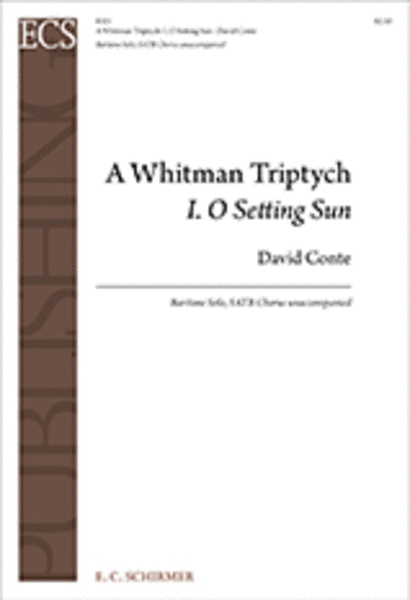
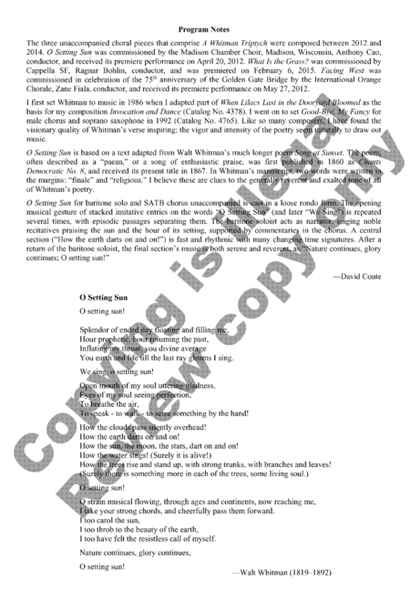
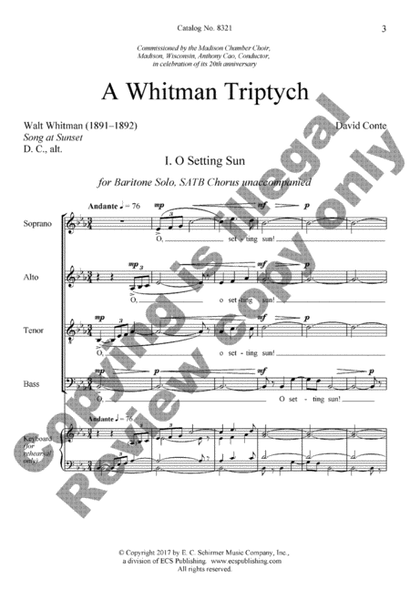

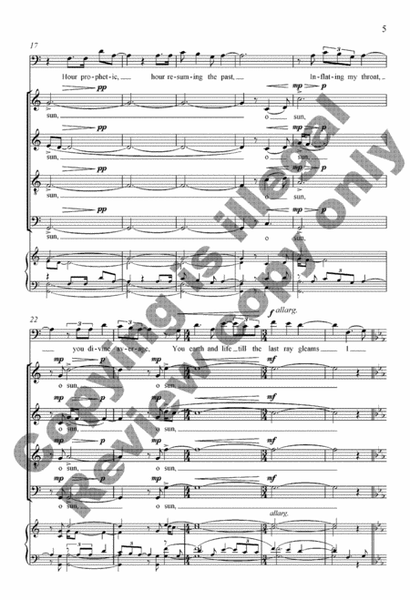
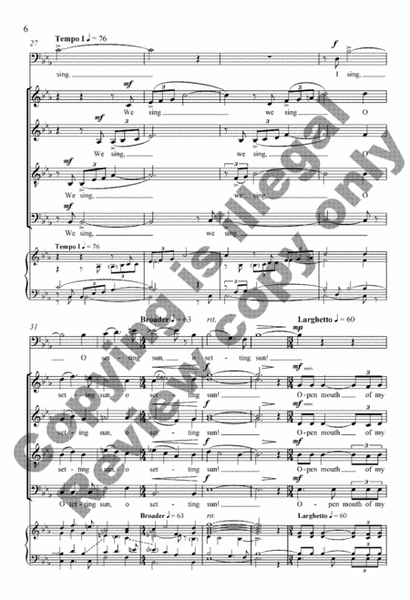
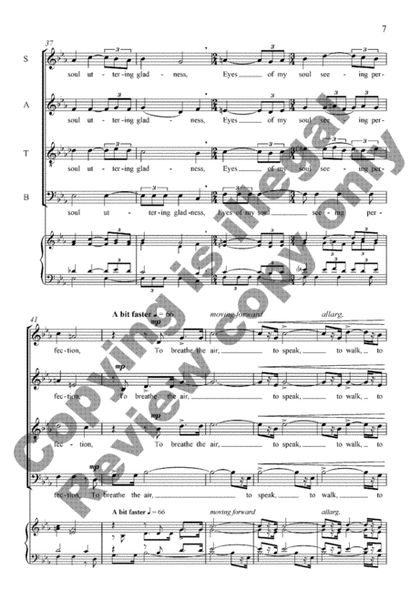
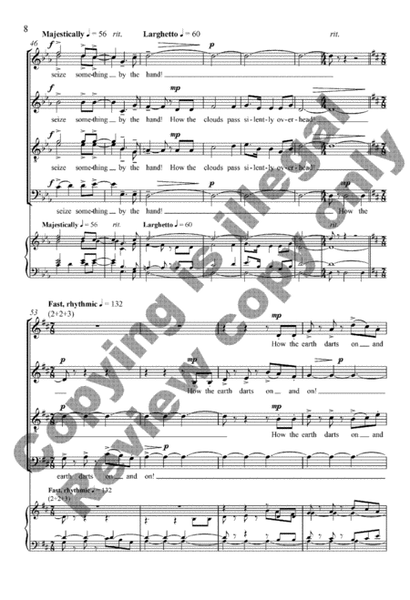
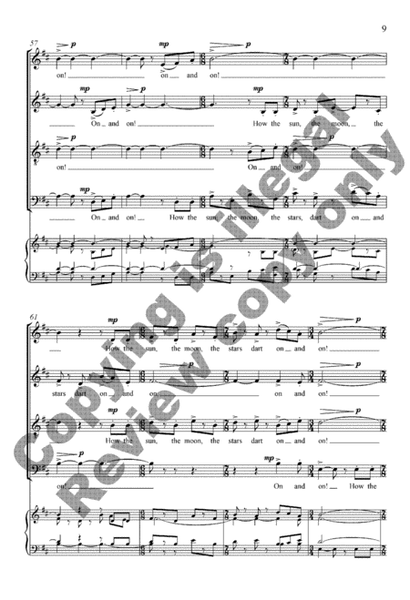
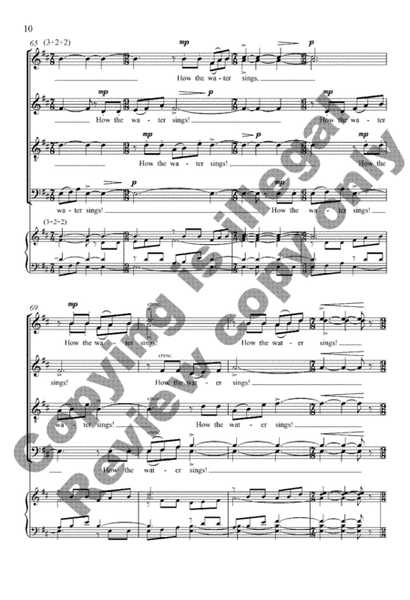
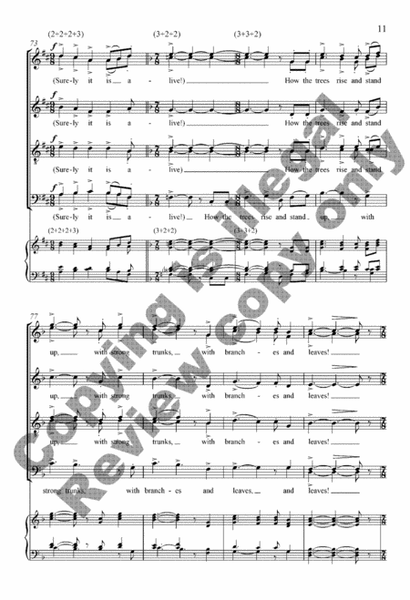
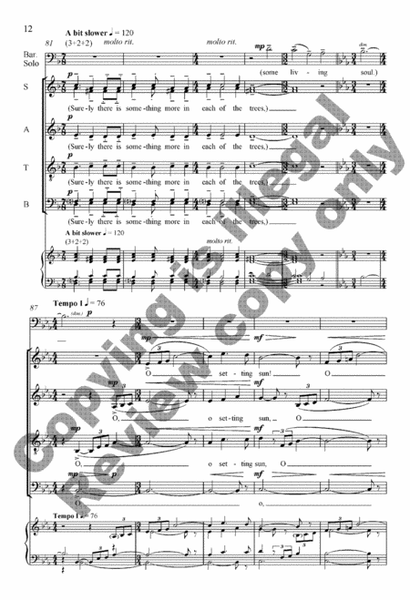
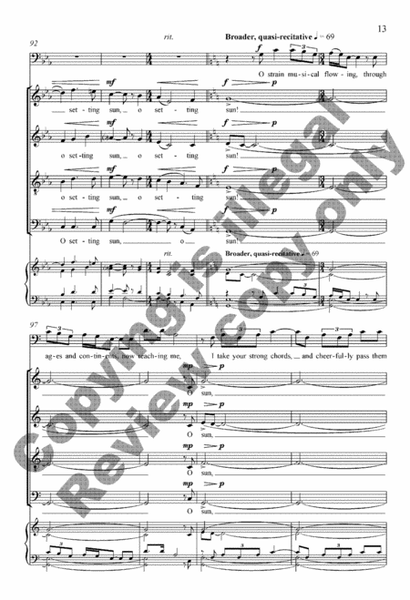
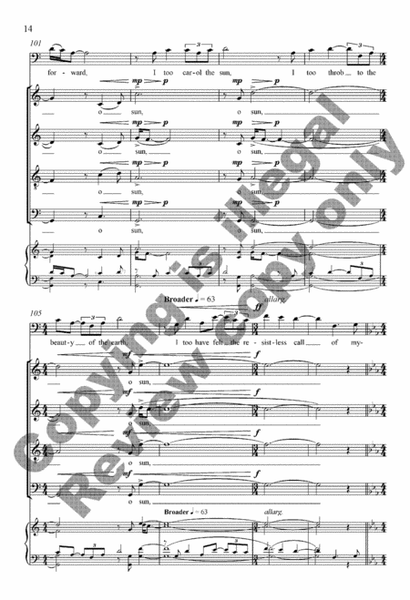
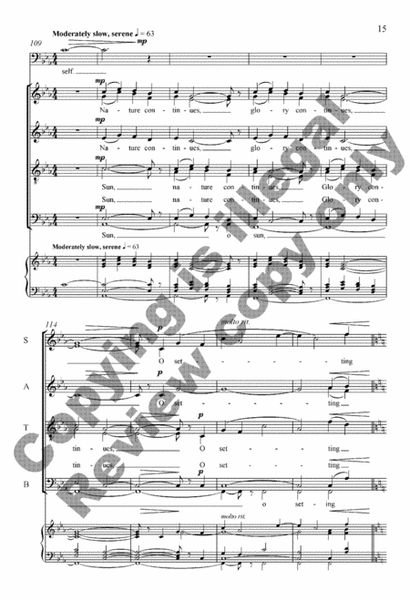
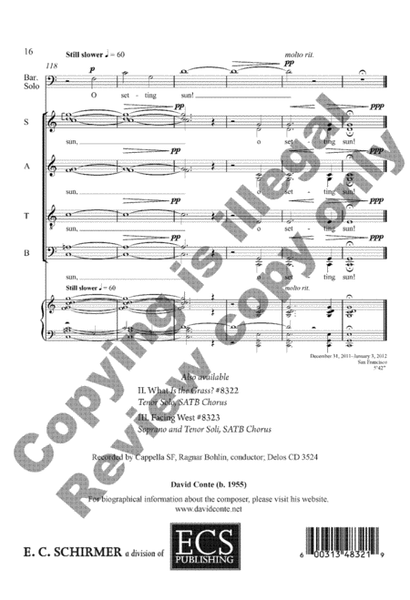
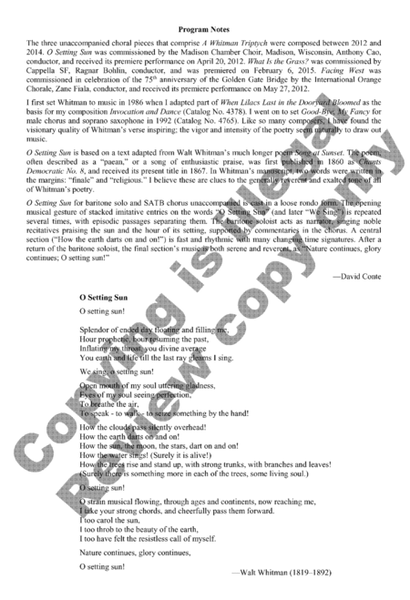
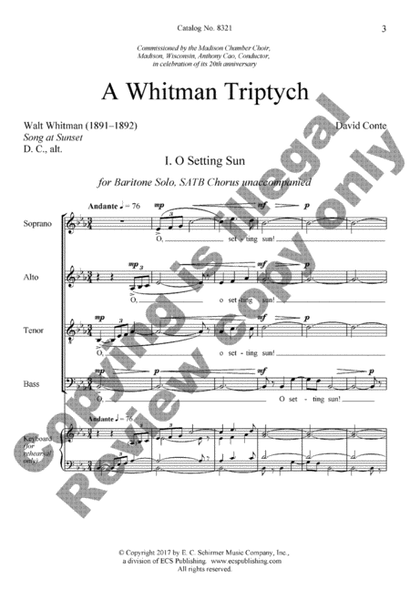
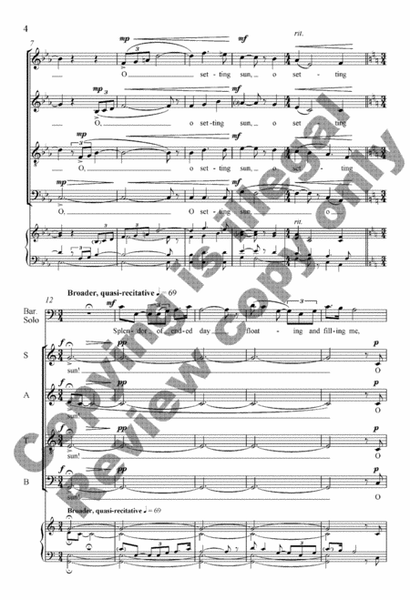
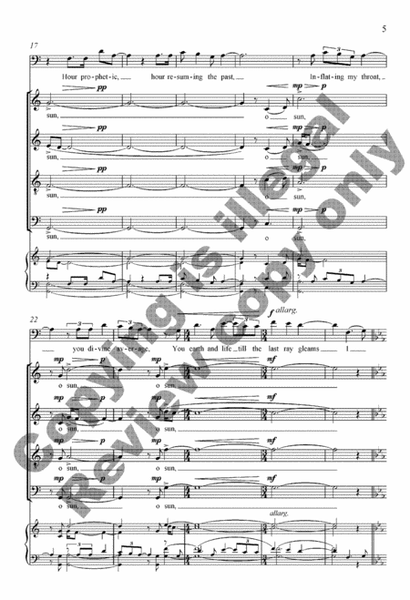
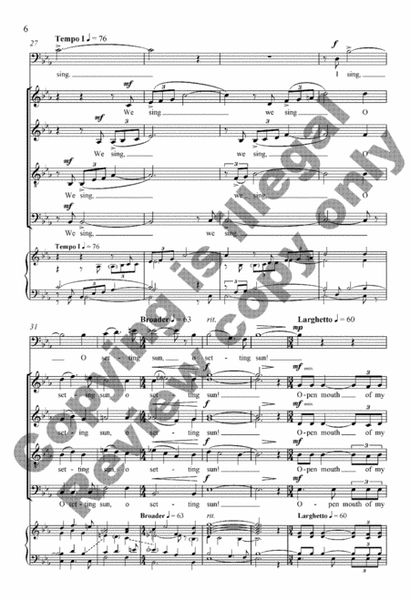
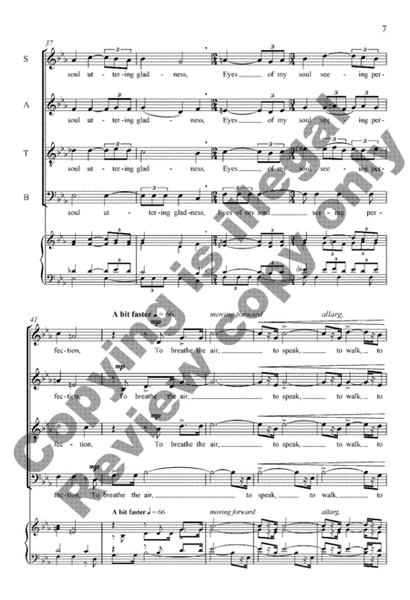
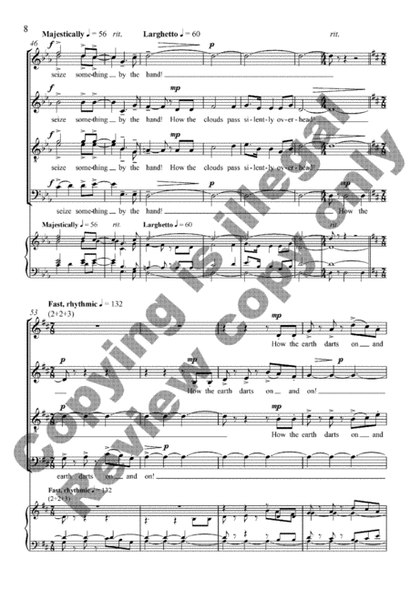
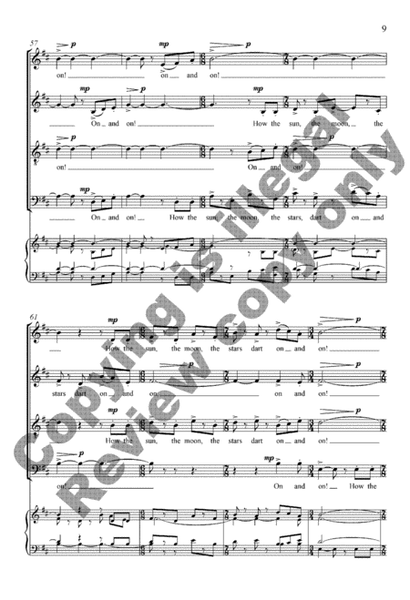
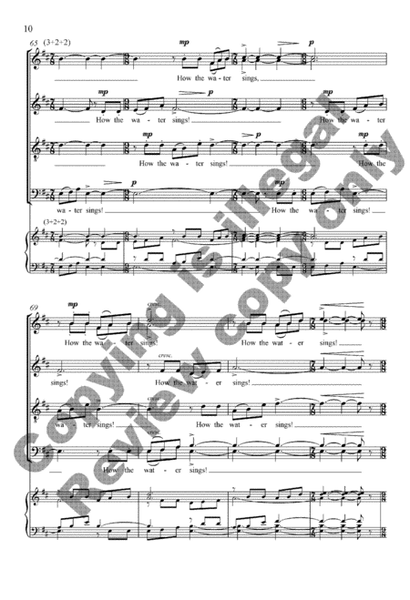
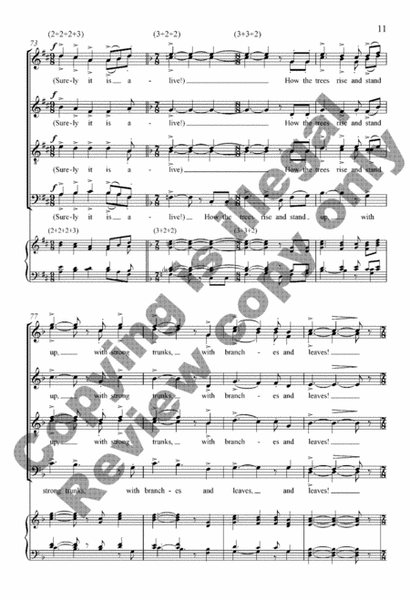
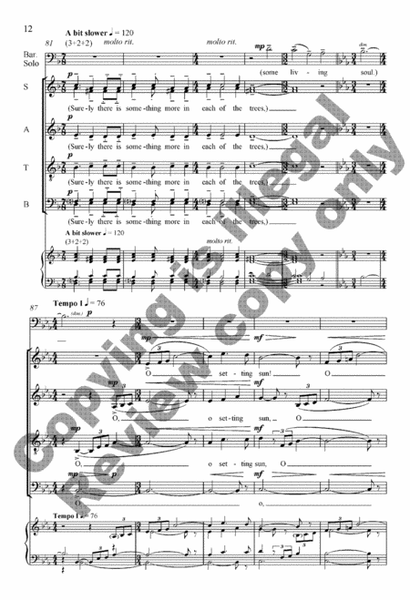
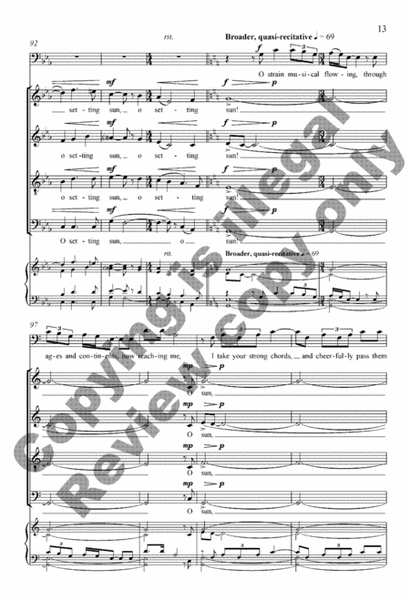
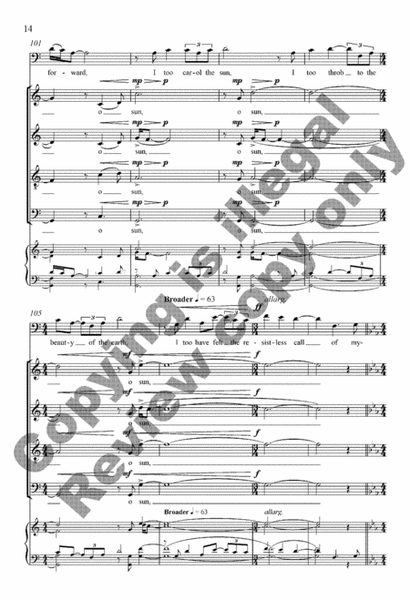
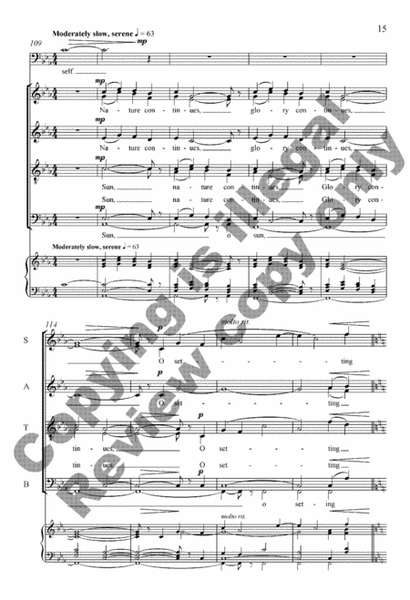
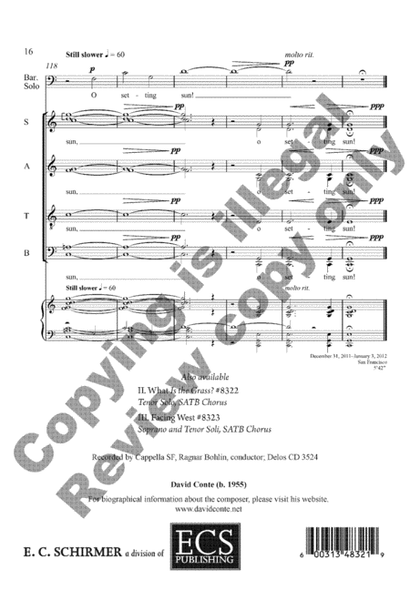
 Share
Share